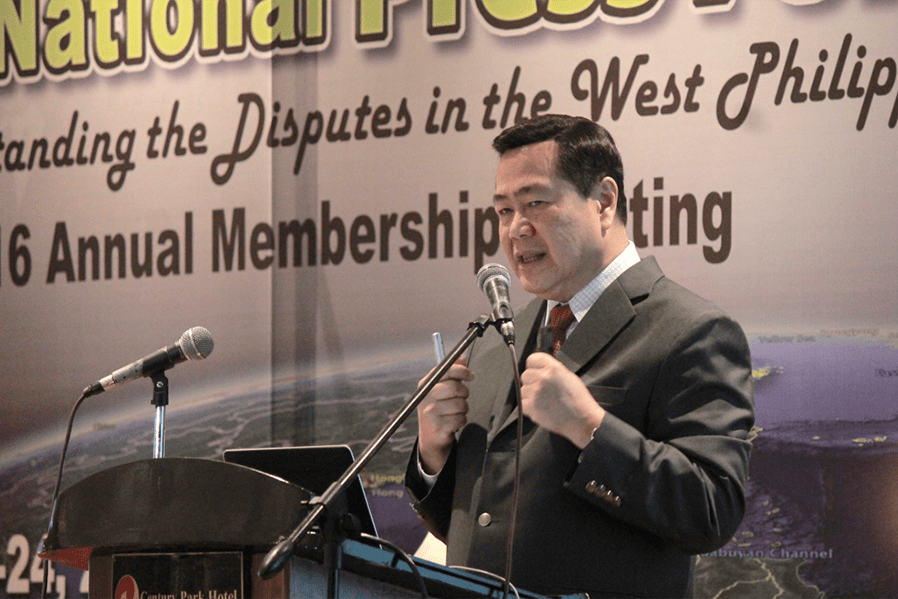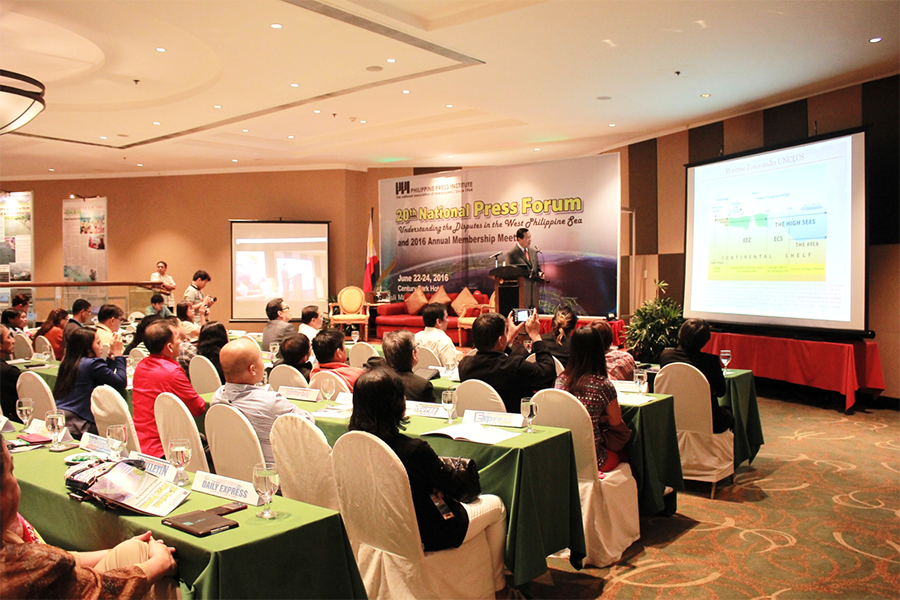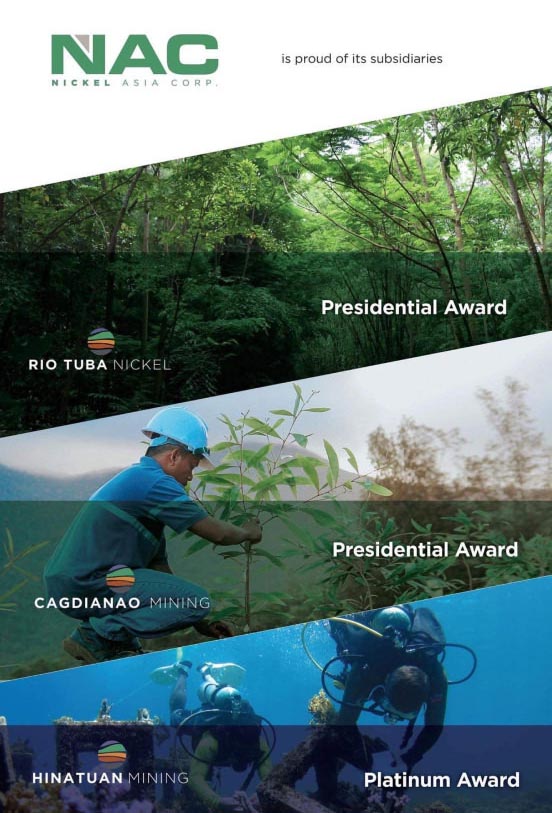Supreme Court Senior Associate Justice Antonio T. Carpio delivers a talk at the 20th National Press Forum of the Philippine Press Institute, themed: “Understanding the Dispute in the West Philippine Sea,” on June 23 at the Century Park Hotel in Manila.
What is at stake for the Philippines in the South China Sea?
Over 531 square kilometers of maritime space — an aggregate area larger than the country’s total land area that is now the subject of the country’s escalating territorial dispute with China, and an arbitration case brought unilaterally by the Philippines to United Nations-backed tribunal at The Hague.
Speaking during the recently concluded 20th National Press Forum organized by the Philippine Press Institute (PPI), themed “Understanding the Disputes in the West Philippine Sea,” Carpio underscored the magnitude of the territorial dispute between the two countries
“The area, over 531,000 square kilometers of maritime space, together with all the fisheries, oil, gas and mineral resources found within this vast area, is what China wants to grab from the Philippines,” Carpio said in his presentation before publishers and editors of PPI’s member newspapers.
“This Chinese aggression is the gravest external threat to the Philippines since World War II.”
The Philippines, and much of the global community, especially other claimant states to the disputed islands in the South China Sea, are awaiting with much anticipation the ruling from the Permanent Court of Arbitration and its anticipated impact on the country’s sovereignty over the West Philippines Sea, in particular the contested islands in the South China Sea lying within its exclusive economic zone (EEZ) and extended continental shelf (ECS) as prescribed by international law.
Of the said total maritime area at stake, 381,000 square kilometers — and their bountiful resources — are part of the Philippines’ EEZ while the rest comprises the country’s total ECS.
Under the United Nations Convention on the Law of the Sea (UNCLOS) — an international agreement crafted between 1973 and 1982 which Beijing took part in — an island above water at high tide such as the Philippines is entitled to up to 200 nautical miles of territorial sea and its natural resources, which the state has exclusive right to explore, exploit, conserve, and manage.
It has also granted the country the right to exclusively establish and use artificial islands and structures in its EEZ. But such right was violated by China when it started building man-made islands in Mischief Reef and Subi Reef, both parts of the disputed Spratly Islands located within Philippines’ EEZ and ECS, respectively.
“Under UNCLOS, only the Philippines can exploit its natural resources or erect structures on it. All living and non-living resources within the EEZ belong exclusively to the adjacent coastal state,” he added.
China’s controversial claim to the West Philippine Sea is based on the so-called nine-dash line, a cartographic marker covering 87 percent of the disputed islands, which it uses to show the extent of its territorial claims. The nine-dash line, which Carpio said “gobbles up” coastal states’ EEZ, was asked by the Philippines before the tribunal to be declared illegal.
‘Grand theft’ of global commons
China has claimed much of the South China Sea, putting it at odds not only with the Philippines but also with other Asian nations, including Southeast Asian countries like Vietnam. Its maritime claims to the strategic waterway have expanded to include even the high seas.
Carpio, who has done extensive research on the dispute, said South China Sea waters which are beyond any state’s EEZ are considered “global commons” or high seas, which cannot be subject to sovereign rights.
This means no country could declare exclusivity in activities such as fishing in high seas, which he said has been violated by China since 1999 when it declared a three-month annual fishing moratorium in Macclesfield Bank, part of the high seas, along with Scarborough shoal and Paracels Islands.
“By appropriating itself the fishery resources in the high seas of the South China Sea, China is committing a grand theft of global commons,” Carpio said.
Optimism on ruling
With the UN tribunal’s decision expected to come out in July, Carpio expressed confidence that it the court will rule in favor of the Philippines, citing the country’s legal rights under the international laws.
Carpio said even history tells that the Philippines owns the disputed islands such as Spratlys, dismissing China’s claims that it was part of its territory since its early dynasties.
He presented centuries-old maps from both countries which show that China’s southernmost territory ends in Hainan Islands, while the 1695 Coronelli Map of Southeast Asia graphs the disputed Spratleys as part of the Philippines, then under the Spanish occupation.
The Murillo Velarde’s 1734 map, considered as the mother of Philippine maps, also shows some areas of the South China Sea as part of Philippine territory. The map was submitted to the arbitration court as one of the pieces of historical evidence expected to bolster the Philippines’ maritime claims over the disputed West Philippine Sea.
Amid China’s bluster in the West Philippine Sea, the Philippines cannot afford to engage in a war with China. But build up its own self-defense capability it must as a possible deterrence against China’s aggression, he said, adding that the Philippine must take its cue from Vietnam, another claimant to disputed islands in the South China Sea and a significantly smaller country than the East Asian giant, yet it has developed a credible military force.
“We have to develop our own self-defense just to make it costly for any country to grab our territory,” Carpio said.










